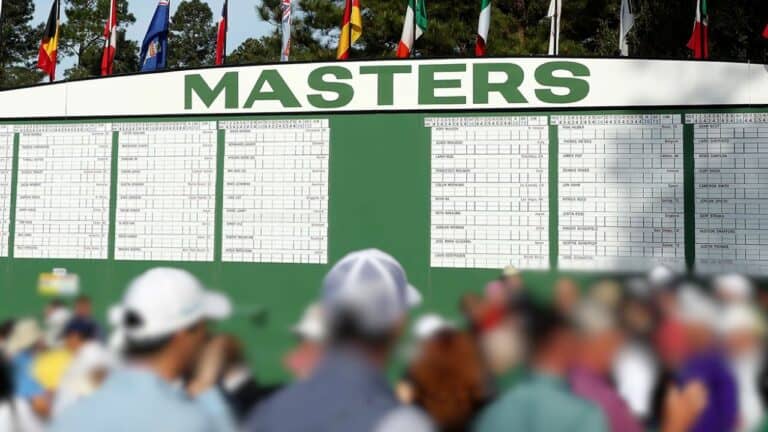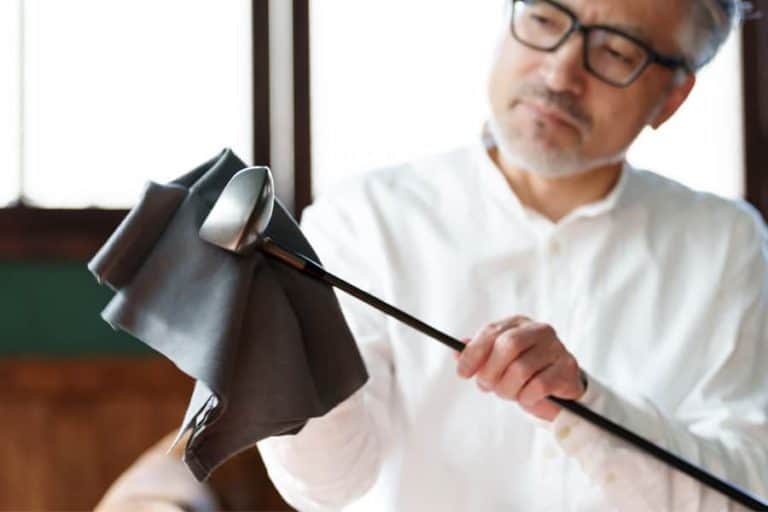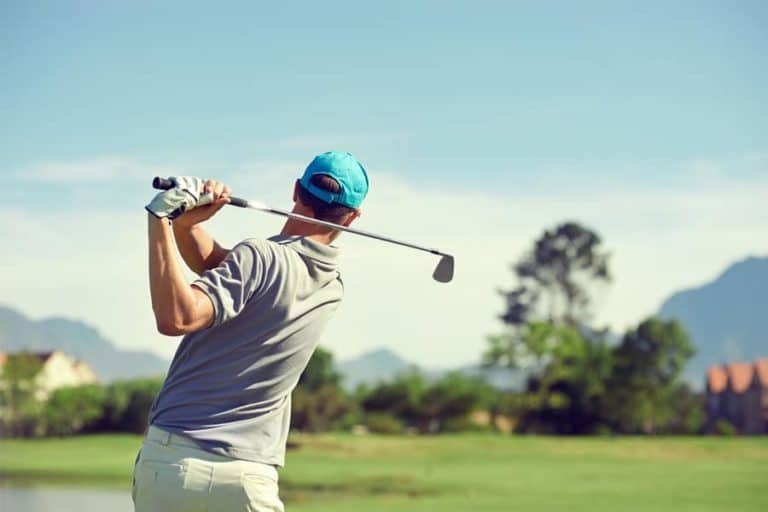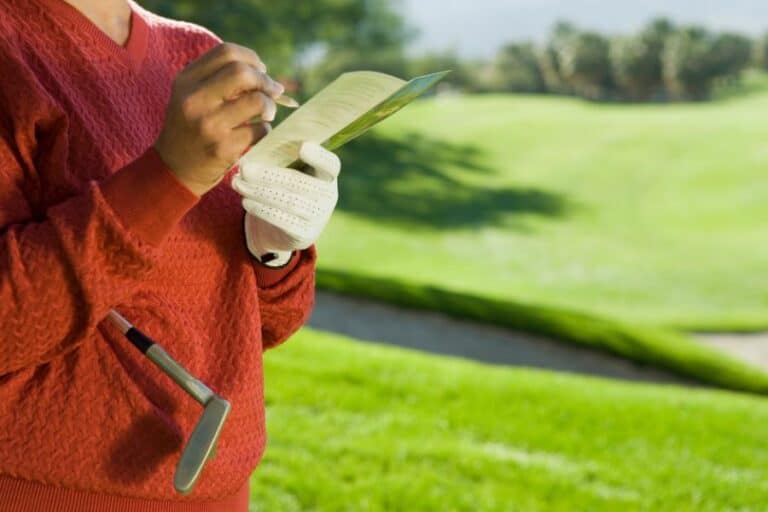Definition Of What Is Green In Golf (Or Putting Green)
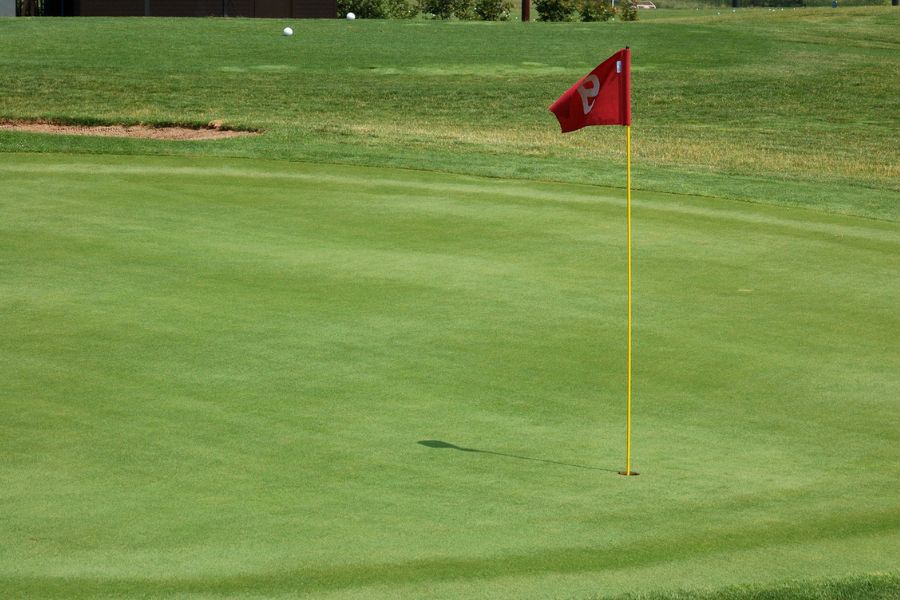
Discover the power of green in golf and improve your game today! Our expert tips and insights will help you understand the importance of green in golf and how it impacts the game.
Green in golf is an important aspect of the game. It’s where players try to putt and get the ball in the hole. Though the golf ball is quite close to the hole, putting can be difficult. So, it’s essential to know about the greens in golf.
Green sizes differ from course to course. Therefore, the shape and arrangement of the green can affect a golfer’s approach for every shot.
Here we explore what is green in golf, its types, how it affects the game and how golfers can improve their putting skills.
What is the green in golf or putting green on a golf course?
The Green, often known as the putting green on a golf course, is the portion of the course where the hole is located. It is usually a specifically prepared area of short-cut grass with a flat surface and a flagstick indicating where the hole is.
Golfers complete each hole by attempting to hit their ball into the hole with a putter on the putting green. The condition and upkeep of the putting green are critical aspects in the game of golf since they influence the pace, break, and overall difficulty of putts.
The size of the green
A typical green should be between 300 to 400 square meters. However, green areas can sometimes be substantially larger, measuring up to 600 square meters. In other words, a golfer’s success on the course is greatly influenced by the green.
Read More: How Many Acres Do You Need For A Golf Course?
The shape of the green
The shape of the green can vary depending on the design of the course and the hole itself. Typically, greens are circular or oblong in shape, although they can also be kidney-shaped, triangular, or even heart-shaped.
Types of greens in golf
There are different types of greens used in golf, each with their own unique characteristics and challenges for golfers to navigate.
1. Double Greens
A double green is a putting green surface that serves as the green for two separate holes on a golf course. It has two flagsticks and can accommodate two groups of golfers playing at the same time. They are more commonly found in older links courses in Great Britain and Ireland, but can also be seen on parkland-style courses.
2. Alternate Greens
Alternate greens are two separate greens constructed for the same golf hole. This means that a single golf hole features not one but two putting surfaces. Dual greens on a single hole are highly unusual in golf, but they do occasionally appear on 18-hole courses.
Most 9-hole golf courses opt for using alternate tees rather than alternate greens to provide a different golfing experience for the second round as maintaining two different greens for each hole is time-consuming and expensive.
3. Punchbowl Green
A punchbowl green is a type of putting surface in golf that is located in a depressed area, creating a bowl-like shape with a flat bottom and mounding around three sides.
The front of the green is open to the fairway to allow golf balls to roll onto it, and the fairway often slopes down towards the green. They add variety to a golf course in terms of size, shape, and distance, each of which challenges players in their own ways.
Punchbowl designs are not commonly used today due to modern irrigation techniques, but some golf course architects still include them for aesthetic reasons.
4. Crowned Green
Also known as domed greens, turtleback greens or tortoise-shell greens, crowned green is a type of green that rises to a peak in the middle and tapers to the edges. Most courses with crowned greens were developed before World War II, and their popularity peaked with architects like Pinehurst No. 2’s North Carolina designer Donald Ross.
Reading the green in golf
Reading greens is the pre-putt process of determining where to aim by assessing the break, slope, and grass grain to make a successful putt. Examining the green’s contours and slopes in detail might help golfers make better decisions about how to approach each putt and boost their chances of making it. Below are the essential steps to follow to read the greens the right way:
Step 1: Assessing the slope to determine how to putt the ball to the hole
Step 2: Walking around the putt to get an better idea on adjusting your aim
Step 3: Checking for grain to understand the direction of the grown grass where you are playing
Step 4: Dividing the longer putts into sections to help you focus specifically on each area of the putt
Is the green in golf made of real grass?
The putting green at a golf course is often made of genuine grass. Climate, geography, and the preferences of the course’s administration can all affect the grass utilized. Putt greens typically employ Bermuda grass, bent grass, or Poa annua. These varieties of grass are chosen because they can survive heavy play, stay flat, and give golf balls a true roll.
Nonetheless, some courses also have synthetic or artificial putting greens constructed from materials like nylon or polypropylene. They are reserved for non-competitive use, such as training or practice, and are never utilized in a competitive setting.
Measuring the green speed
A golf ball’s rolling speed on a green is used to quantify the green’s pace. A stimpmeter, a device developed specifically for measuring green speed, is commonly utilized.
Are golfers allowed to use a different club on the golf green?
As per USGA rules, golfers are allowed to play with their choice of club on the golf putting green.
At the 2019 U.S. Open, Gary Woodland had a tough putt on the 17th green at Pebble Beach. Nonetheless, he used a wedge to set up the shot and got par, which helped him win. A tournament putting green may have a bunker. Golfers may use a different club to chip over the bunker to avoid it.
Remember that certain golf clubs may not allow golfers to use different types of clubs on the course or putting green during normal play or local tournaments. PGA tournaments require golf clubs to let players use any club on the course, including the putting green.
Ultimately, the choice of which club to use on the green comes down to the golfer’s personal preference, the specific conditions of the course, and the shot they need to make.
Rule 13 in greens
As soon as your golf ball is within the boundaries of the putting green, the USGA Rule 13 becomes applicable, allowing you to make repairs before or after your ball has landed on the green. In addition to rule 13, there are other golf rules also that can be beneficial for you while playing on the greens:
Rule 10
USGA Rule 10 in golf governs the order of play based on the distance of the ball from the hole. However, players can play out of turn if the farthest player is not ready, with permission from the player whose turn it is.
Rule 20-5
If a player takes their turn out of order and putts without permission from the farthest player. This rule allows the opponent to ask for a replay of the shot without penalty. In this case, the player must replace their ball on the green in its former location and retake the shot.
Tips to improve putting stroke on greens
Practice your putting if you want to improve as a golfer. Here are different ways to improve your putting strokes on green:
- Outdoor Putting Greens: On outdoor putting greens, some golf courses feature practice areas. They are fantastic since you can practice shots from different green locations without having to stop for other golfers.
- Indoor Putting Greens: Indoor putting greens are simpler than outside ones, typically featuring a small area of artificial grass with the same height as that of a putting green. The indoor green looks like a runner with a hole at the end.
- Indoor Golf Simulator: An indoor golf simulator lets you practice putting on a variety of different golf courses anytime. Depending on the setup, the golf simulator can provide vital information and feedback on ball location, speed, swing, and more to help you improve.
How golf courses maintain their greens?
Golf courses should maintain their greens using multiple methods and tools:
- Mowing: Golf courses utilize special mowers to cut greens grass to 1/8 to 1/4 inch. Weather-adjusted mowers cut grass equally.
- Aeration: To reduce soil compaction and allow air, water, and nutrients to reach the soil, golf courses aerate their greens. Usually, a machine used for aeration separates tiny soil cores from the green.
- Fertilization: Golf facilities utilize specific fertilizers to maintain their greens and keep them healthy and green. Fertilizers are normally sprayed every 4–6 weeks during the growing season.
- Watering: The greens at a golf course can be watered whenever it’s necessary, thanks to the facility’s irrigation system. Depending on the weather and the state of the green, adjustments are made to the amount and frequency of watering.
- Topdressing: Topdressing is used on golf courses to enhance the soil’s structure and lessen thatch growth on the greens. Topdressing is the process of brushing in a thin coating of sand or other materials after spreading them out on the green.
- Pest Control: Golf courses adopt a wide variety of methods to combat unwanted pests including insects, illnesses, and weeds. The use of pesticides, cultural practices, and biological controls are all examples of methods that might be employed.
- Monitoring: The staff of the golf course regularly inspects the state of the greens to spot any problems and take prompt corrective action. To assess the health of the greens, they could deploy instruments like soil moisture meters, pH testers, and light meters.
Conclusion
The green is the single most important feature of any golf course. It is the place where the game is won or lost, and where the players’ abilities are put to the test. Golf course managers are responsible for preserving the course’s green by constantly mowing, watering, and fertilizing it. Repairing divots and ball marks is another way for players to show they care about the green and the course. The green is an integral part of the game of golf and, as such, must be given the utmost respect at all times.



